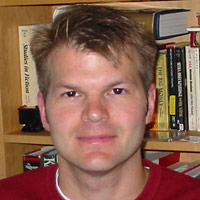{image1} For whatever reason, the 2005 Brewers open play this season with fairly high hopes, both from the clubhouse and the bleachers.
"High hopes" in the local parlance doesn't translate to a World Series title, a National League pennant or even a wild-card catch. And many who harbor them aren't even predicting a .500 finish. Instead, concrete improvement is on everyone's mind, with the previously mentioned items on the agenda for 2006 and beyond.
New owner Mark Attanasio is primarily responsible for the change, followed by Carlos Lee, whom Attanasio enabled GM Doug Melvin to trade for and Ned Yost to manage. Combined, the foursome has transmitted more positive vibes this spring than a typical Oprah episode.
A positive mental attitude is step one when you haven't made the playoffs in 23 years nor have won more than you've lost in 13. But it's a step, nonetheless, and for the most part, it feels legitimate. Then again, so does everything else in April.
For the Brewers to cash in on the promise, a couple of key (and perhaps, obvious) things will need to unfold on the field. In no particular order, they are:
- Lee must provide the middle-of-the-order help he is capable of -- meaning .300, 30, 100-type numbers.
- Geoff Jenkins must rebound from his 152-strikeout campaign of 2004.
- Absent Dan Kolb and Luis Vizcaino, the Brewers must find a reliable late-innings combination amid a questionable relief corps.
- Junior Spivey must stay healthy and provide a spark atop the order in concert with new leadoff man Brady Clark.
- Ben Sheets and Doug Davis have to anchor a developing rotation and provide at least 25-30 wins between them.
- Lyle Overbay must avoid a Milwaukee sophomore slump and provide extra-base power behind Jenkins and Lee.
There's more, but most Brewers fans have been debating these possibilities for weeks. So what other factor could be the difference between the 2005 Brewers making real strides or remaining mired on the dark side of 70 wins? Try the left side of the infield.
Even with Clark replacing Scott Podsednik in center, the outfield looks solid. Overbay and Spivey provide offense and, in the latter's case, defensive range on the right side of the infield. Damian Miller and Chad Moeller should provide defense, leadership and occasional pop (from Miller) at catcher. And last year's reliable pitching shouldn't evaporate into the ether without Kolb. But what about third base and shortstop? Both spots are worrisome.
Russell Branyan and Wes Helms will platoon at third, which means the lefty-hitting Branyan should see more starts and ABs. Veteran Jeff Cirillo will also fill in occasionally, but he's expected to be more of an all-around utility guy and pinch-hitter than a platoon starter. That could change if the situation demands it.
The problems here are fairly obvious. Branyan and Helms both have power, but they both fan way too much (Branyan struck out 68 times in 158 Brewers ABs last year, Helms 60 times in 274 -- which is good only by comparison with Branyan). Helms is renowned for his strong arm, but neither is going to supplant Scott Rolen for a Gold Glove at the hot corner. In fact, some call either or both weak defensively, though each appeared to make some progress with the glove this spring. Can either player -- Branyan, a AAA player rescued by Melvin late last year; or Helms, a guy trying to save his career after a terrible 2004 -- be a legitimate contributor on a winning team?
Rookie J.J. Hardy will play alongside either of them at short. Hardy missed most of last year with a shoulder injury, but he was ticketed for the starting job since the day the Brewers didn't re-sign veteran Craig Counsell. With the front office intent on getting some of the kids in front of paying customers this season, Hardy seemed like the safest bet not to embarrass himself. Quick with the glove and hopefully pesky with the bat, the rookie will be depended on to make all the routine plays and a few more, besides. He is apparently worthy of the trust -- ESPN's Tim Kurkjian picks him to win the NL Rookie of the Year award.
According to spring training reports, Hardy is as advertised. Several stories mentioned his head-turning defensive skills, though he committed four errors and batted a typical .242 overall. If he makes the routine plays, impersonates Khalil Greene every now and then and manages to hit .250 for the year, Melvin and Yost are likely to consider the gamble a smashing success.
They'll need more than .250 from the guys at third, though routine plays are also a requirement. More consistent contact and 20-25 combined home runs are needed, as well. But if both positions contribute the way Melvin and Yost are hoping, all the excitement surrounding the 2005 Brewers might actually be justified.
Sports shots columnist Tim Gutowski was born in a hospital in West Allis and his sporting heart never really left. He grew up in a tiny town 30 miles west of the city named Genesee and was in attendance at County Stadium the day the Brewers clinched the 1981 second-half AL East crown. I bet you can't say that.
Though Tim moved away from Wisconsin (to Iowa and eventually the suburbs of Chicago) as a 10-year-old, he eventually found his way back to Milwaukee. He remembers fondly the pre-Web days of listenting to static-filled Brewers games on AM 620 and crying after repeated Bears' victories over the Packers.





